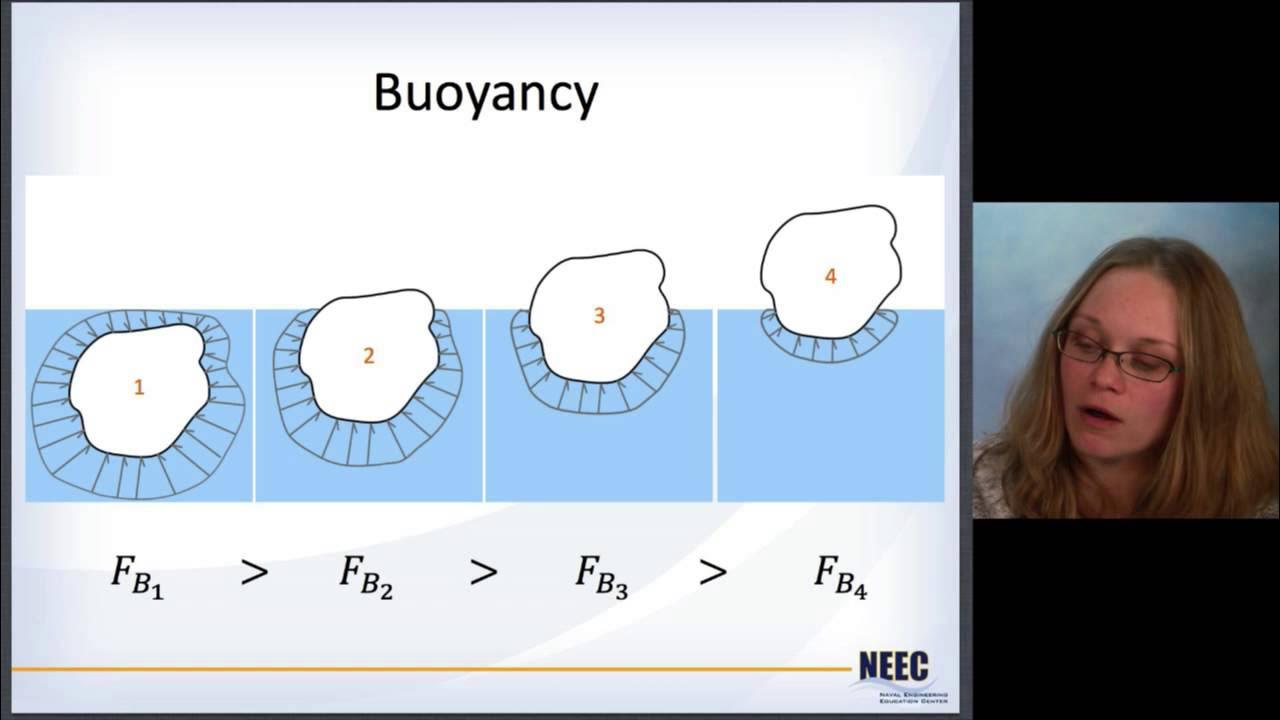Naval Arch 03 - Intact Stability
Summary
TLDRIn this lecture on hydrostatics, Laura Alfred discusses the critical concepts of ship stability, focusing on transverse and longitudinal stability. She explains how a ship's behavior changes when tilted, introducing the concepts of center of gravity, center of buoyancy, and metacentric height. By illustrating stability through examples and calculations, Alfred emphasizes the importance of maintaining a proper balance between stability and comfort, addressing factors like beam and depth. The lecture concludes by hinting at the complexities of damage stability, setting the stage for future discussions.
Takeaways
- ⚓ Transverse stability involves understanding what happens when a ship heels over, particularly how the center of buoyancy shifts.
- 📏 The meta center (M) is an imaginary point that helps evaluate a ship's stability when tilted at small angles.
- 📊 The metacentric height (GM) is crucial for determining initial transverse stability; GM > 0 indicates stability.
- 🔄 For small angles of heel, the writing arm (gz) is approximately equal to GM times the sine of the angle of heel (Fe).
- ⚠️ If GM is zero, the ship is neutrally stable; if GM is negative, the ship is unstable and will continue to tip over.
- 🛠️ Calculating stability requires knowledge of the ship's dimensions, including beam and depth, which affect initial GM.
- 📈 Longitudinal stability deals with pitching motions and uses similar principles, but focuses on longitudinal moment of inertia.
- 🏗️ Trim is the difference between the bow and stern drafts and is critical for maintaining stability and ship balance.
- 🔍 A balanced initial GM between 0.5 m and 8 m is ideal for ensuring both stability and comfort for passengers and cargo.
- 🚧 Damage stability, which addresses how ships respond to damage or unexpected incidents, will be discussed in future lectures.
Q & A
What is the main focus of the lecture on hydrostatics?
-The lecture primarily focuses on the stability of ships, discussing both transverse and longitudinal stability.
What does transverse stability refer to?
-Transverse stability refers to a ship's ability to remain upright when tilted side-to-side.
How does the center of buoyancy change when a ship heels?
-As a ship heels, the center of buoyancy shifts, which alters the stability of the vessel by creating a moment that affects its upright position.
What is the metacentric height (GM) and why is it important?
-The metacentric height (GM) is the distance from the center of gravity to the metacenter. It is a critical measure of stability; a positive GM indicates stability, while a negative GM indicates instability.
What is the significance of the writing arm (gz) in stability calculations?
-The writing arm (gz) is the distance between the center of buoyancy and the center of gravity, which helps in calculating the stability of the ship under various angles of heel.
How does longitudinal stability differ from transverse stability?
-Longitudinal stability concerns the pitch of the ship (tilting forward or backward), while transverse stability focuses on the roll (tilting side-to-side).
What is trim, and why is it important in ship stability?
-Trim is the difference in draft between the bow and stern of a ship. It affects stability; positive trim is preferred for better performance, while negative trim can indicate poor conditions.
What factors influence a ship's metacentric height (GM)?
-GM is influenced by the shape of the hull, loading conditions, and the vertical positions of the center of gravity and buoyancy.
What are the potential consequences of a negative GM?
-A negative GM can lead to instability, causing the ship to capsize or continue rolling in the direction it has been tilted.
What will the next lectures cover after this introduction to stability?
-The upcoming lectures will address damage stability, focusing on the ship's response to conditions such as collisions or other forms of damage.
Outlines

This section is available to paid users only. Please upgrade to access this part.
Upgrade NowMindmap

This section is available to paid users only. Please upgrade to access this part.
Upgrade NowKeywords

This section is available to paid users only. Please upgrade to access this part.
Upgrade NowHighlights

This section is available to paid users only. Please upgrade to access this part.
Upgrade NowTranscripts

This section is available to paid users only. Please upgrade to access this part.
Upgrade NowBrowse More Related Video

Naval Arch 01 - Ship Geometry

Naval Arch 02 - Pressure and Buoyancy

Naval Arch 04 - Effects of Loading on Stability

Differentiating Statical Stability & Dynamical Stability: Understanding Ship Balance

#215 Problem on Nyquist plot in control systems || EC Academy

⌚▶ |CMPK 2 - Materi 7| Kekuatan Struktur dan Material Kapal
5.0 / 5 (0 votes)